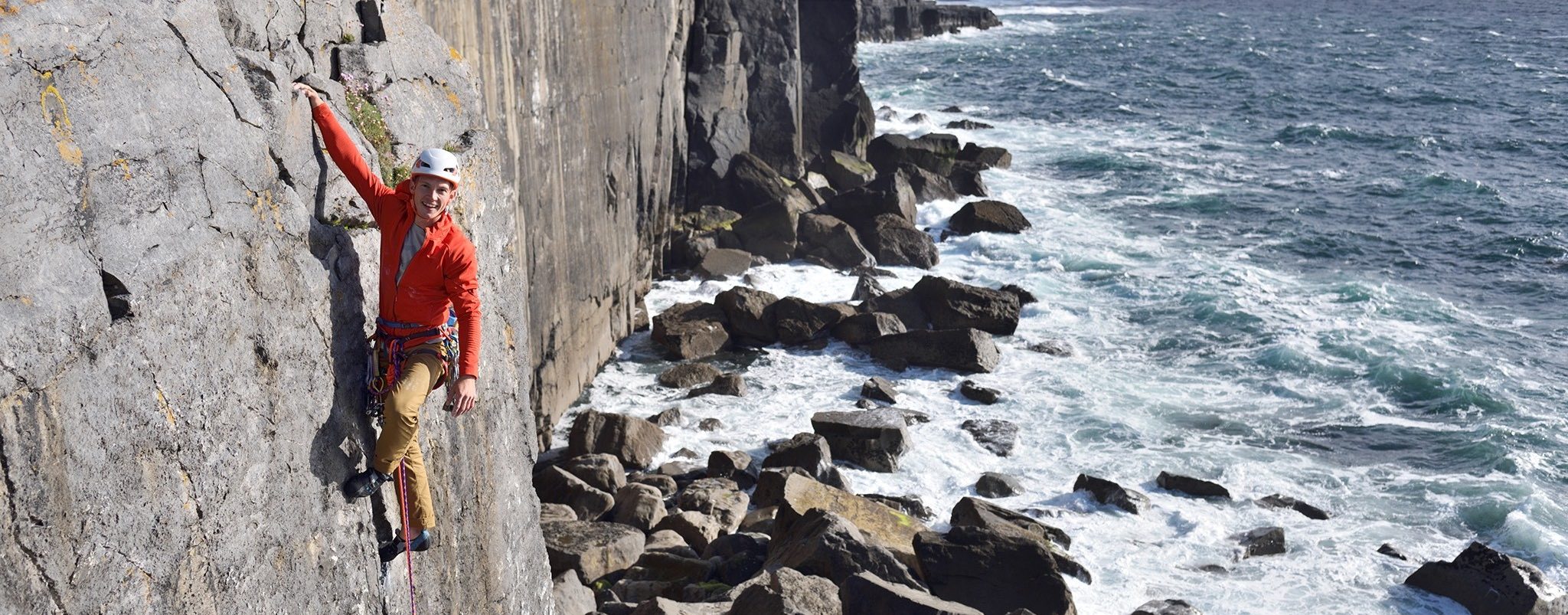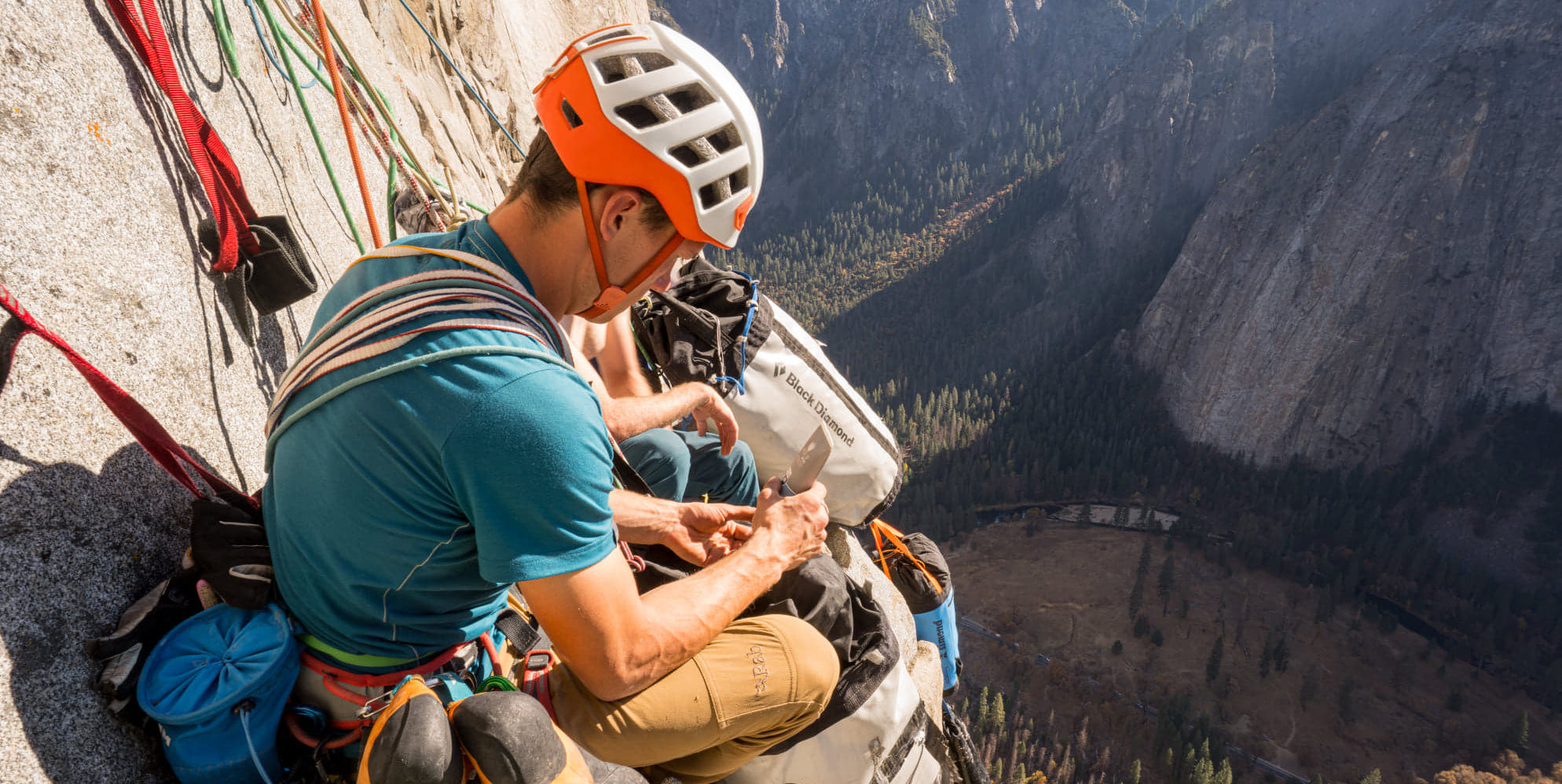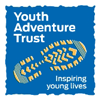Angus Kille reveals his top tips to becoming the perfect climbing partner on second…
Lead climbing itself takes a certain level of experience, and gaining experience in trad climbing can be tricky since there is an inherent risk to our favourite activity. Fortunately, you can serve an apprenticeship in trad climbing on the bottom end of the rope. Seconding is a fantastic way to develop your trad climbing skills, learn from your partner and get more comfortable with the equipment.
Here are a few tips that will help you get the most out of climbing as a second.
1. Think one step ahead
The easiest way to be a better second is simply not leaving everything down to your climbing partner. Rather than how hard you climb or how experienced you are, your partner will be more concerned that you’re good company and you know what to do with a rope in your hand.
If you’re familiar enough with how climbing systems work, thinking one step ahead is guaranteed to make the whole operation smoother and ultimately more fun. This might mean anticipating when your partner needs slack, knowing where you need to position yourself at a belay, sorting the gear ready for the leader to rack up or flaking* the rope out while the leader is busy getting their wits together.
A great tactic is to keep talking to your climbing partner to make sure you’re both on the same page. If you always know what’s going on, you can get things done while they’re busy, and what’s more, you can learn all of that decision making much quicker.
*Flaking – running the rope through your hands from one end to the other, to make sure there are no knots or damage to the rope and to put one end of the rope at the top of the stack so it will run smoothly.
2. Get really good at removing gear
OK, it seems really obvious. But it makes a huge difference to climbing efficiently, and actually kit can be much harder to get out than it was to put in. We’ve all had the feeling that we’re performing keyhole surgery when wiggling out a wire several pitches up. Too often I’ve tried to extract the nut below the crux my partner was falling on, wondering if this piece is just part of the rock now. But getting good at removing kit will mean you climb faster, more efficiently, and will save you the embarrassing moment when you confess to your climbing partner that you left their favourite cam in the back of the crack down below, and they have to ab down if they want it back.
Fortunately, there is a skill to it. Think about how the piece went in, as that will almost always be the best way to get it out. Don’t yank too hard at loose placements, they’ll often get caught somewhere else. Get a nut-key with a soft end so you don’t ruin your palms with those reluctant wires. If it’s a wiggly piece that just can’t find its way out, talk to it, have a word, and guide it gently out of the crack. And if it is totally welded in, don’t get benighted on the crag wrestling with it, a misadventure will cost you more than the piece is worth.
3. Go the extra mile
Even on single pitch routes, I’ve had partners that have certainly made the difference between success and failure on a route. A really good second will make sure they’ve read the guidebook so they can keep the leader on course while they’re climbing. They’ll call up to tell their partner that the ropes are twisted, that they need to extend some kit or just to let them know they’re getting an attentive belay. But there’s really no end to the things that might make someone the perfect climbing partner.
There are some people I want to hold my ropes because they’ve held enough falls and never let me down. Some climbing partners are just good at keeping you calm on a nervous lead. There’s a special place in the afterlife reserved for climbing partners that bring home-baked snacks to the crag. I’ve had the good fortune to be supported by seconds that behave like professional caddies at the belay. I was once too preoccupied about a sketchy slab called Indian Face*, and caught my climbing partner cleaning my shoes for me to make sure I didn’t slip off.
Reading climbing stories and old mountain literature, people have taken the partnership of sharing a rope pretty seriously. You’re in it together, and you make lasting friendships with the people you share those adventures with. A lot of climbers will agree that looking back, it’s about the people as much as it is about the rock or the route. So say yes to more adventures, whichever end of the rope you’re on.
–
Most of all, if you want to get the most out of trad climbing either as a leader or as a second, make sure you’re having fun. Some adventures are only fun once you’ve made it back, others are fun from the moment you start making plans. But as long as you’re staying safe, learning something every time you go out and enjoying the adventure, you’re probably on the right track!
How can we help you improve?
Angus Kille
Angus is a world-wide respected rock climber with a passion for very hard rock climbing. He is also a good friend and freelance Mountaineering & Climbing Instructor (MCI) for Mountain Expeditions.
He has 12 years’ experience of climbing around the world, ranging from the mountain crags of North Wales (where he lives just down the road from us) to unclimbed big walls in Brazil. Angus’s achievements in climbing include free climbing El Capitan in Yosemite, redpointing multiple 8c’s in Spain and making rare ascents of British E9’s such as Indian Face – an infamous slab climb on Clogwyn D’ur Arddu, North Wales – the first E9 in Britain!
The mix of his climbing abilities, unprecedented passion for rock climbing and his calm and friendly instructing approach makes Angus a firm favourite for many clients. You can follow him on Instagram and Facebook.

Previous Article: 5 top tips for improving your trad climbing







